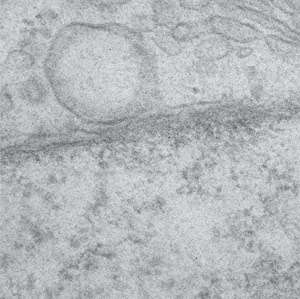Receptors may be able to turn genes on and off by taking a newly-discovered route to the heart of the cell

A new route has been identified, through which cell surface receptors can reach the cell nucleus and potentially control gene expression. The discovery by A*STAR researchers could open the door to a new class of drugs to fight cancer and other diseases.
Human cells are separated from their environment by an impermeable membrane, but material is able to enter cells for signaling, nutrition and a wide variety of other functions.
In the case of large molecules, cells surround them with an area of their outer membrane which then buds off into internal compartments called endosomes in a process called endocytosis. The molecular cargo can then be recycled, broken down in an organelle called an endolysosome, or taken to a cellular processing machine called the Golgi apparatus.
Frederic Bard's group at A*STAR's Institute of Molecular and Cell Biology has been studying how toxins target cells by exploiting this third route via the Golgi apparatus.
The route of the bacterial protein Pseudomonas exotoxin A (PE) from outside cells to the internal core of the cell, called the cytosol, typically proceeds through endosomes, the Golgi and then a membrane network called the endoplasmic reticulum (ER). However, when mapping the genes involved in this transfer, Bard spotted something unusual: endosomes normally thought to remain close to the outer cell membrane could be seen bypassing the Golgi entirely to dock at the nuclear envelope. "That was completely unexpected," says Bard.
These 'nuclear envelope-associated endosomes' (NAEs) were observed discharging their PE cargo into the nucleus.
In these NAEs the researchers also observed the presence of receptors for epidermal growth factor (EGF), a protein that stimulates cell growth and differentiation, alongside the PE.
More tests identified the presence of both PE and EGF receptors in the nucleus, and revealed the same two genes were responsible for allowing them to penetrate the nucleus envelope.
Bard believes his findings help explain previous reports of receptors normally seen on cell surfaces accumulating within nuclei. "Before our work, there was no clear mechanism for how this could occur," he says.
The research could also have important medical applications, notably in the field of cancer therapy. Some cancer drugs work by targeting EGF receptors. However when tumors develop resistance to these therapies, EGF receptors have been reported to accumulate within their cell nuclei.
Greater understanding of how EGF receptors and other proteins can reach the cell nucleus could help researchers develop new therapies that turn genes on or off to fight cancers and other diseases.
More information: Alexandre Chaumet et al. Nuclear envelope-associated endosomes deliver surface proteins to the nucleus, Nature Communications (2015). DOI: 10.1038/ncomms9218
Journal information: Nature Communications



















